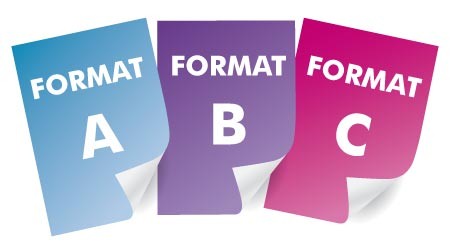LightBox EDR® Insight is pleased to offer readers the second and final installment in a two-part series on commercial appraisal review forms. Author Mitch Kreeger shares his valuable advice for lenders and reviewers in this era of highly-regulated lending operations.
COMMERCIAL APPRAISAL REVIEW FORMS: ADVICE FOR LENDERS AND REVIEWERS (PART II OF II)
by Mitch Kreeger, MAI SRA MBA
In Part I, we learned about the “why? and what?” of appraisal reviews along with regulatory advice. Below, Part II focuses more substantively on the “how?” of appraisal reviews, including best practices, and examples of commercial appraisal review formatting “do’s and don’ts”.
Formats
Which format is required or right for my bank or the assignment: checklist, narrative, or a combination? What are the necessary items that must be addressed? What items are unnecessary or may bog down a review?

As with all things related to appraisals, the answer is: “It depends.” Currently there is no single uniform appraisal review format used consistently across the industry. Critical elements to any appraisal review include:
- reasonableness
- credibility
- regulatory compliance
- and as a bonus: “does it make sense?”
Residential appraisals are mostly form-driven and are generally briefer than commercial appraisals so their respective appraisal reviews also tend to be less detailed. Residential appraisal reviews typically consist of checklists of the elements required by regulation (“guidance” and GSE requirements), a few items on methodology and calculations (adjustment process), and the overall credibility of the report and competency of the appraiser.
Commercial appraisals are mostly narrative and range from basic to complex concepts and property types that often represent higher risk to the institution. As a result, a simple checklist is generally not considered sufficient; yet a full narrative review may be hard to understand and difficult to isolate items considered important to making a credit decision. Best Practices suggest that a hybrid checklist-and-narrative format is usually the best approach. But what is the optimal hybrid?
A good rule of thumb is to include ALL regulatory-required elements (see IA&EG, USPAP Standard Rule 3), weigh in on methodology or technique and calculations (adjustment process), and discuss the credibility of the report and competency of the appraiser – does this sound familiar? It should, as the elements of residential and commercial review are the same. However, residential appraisals are typically one approach to value, often service GSE secondary market fundamentals, and involve additional regulatory elements with respect to the 1-4 residential appraisal requirements of HUD, RESPA, Dodd-Frank and others. Commercial appraisals provide 2 to 3 approaches to value and may include multiple techniques, sets of comparables, and multiple values so the review is more substantive in nature.
There are several elements that must (regulatory-driven) or should (based on an institution’s guidelines or generally accepted appraisal practice) be found within all appraisals, and that may be measured by a checklist-formatted review. Some may be shown as boilerplate checklist items, such as definitions, caveats, standard assumptions of the appraisal and/or review, and basic report formatting to present the report in a logical sequence. These might include:
- Appraiser(s) name, license information, and qualifications,
- Appropriate property identification and descriptions,
- Adequate relevant market discussion to support the highest and best use and valuation assumptions,
- Highest and best use discussion and conclusions,
- Appraiser Certification with all required (regulatory and appraisal organization) statements, and
- Reviewer’s name, license information, qualifications, and Certification.
(Although in checklist format, you should also provide space for reviewer’s comments as appropriate.)
Other review elements should be broken down into basic components with space for review comments, such as discussion of each approach to value, line item adjustments or bracketing comparisons, and final reconciliation process. Each approach to value has numerous elements that must be reviewed so they should be separate line item review features. There may be a need to address Hypothetical Conditions, Extraordinary Assumptions, reliance on 3rd-party reports, inherent strengths or weaknesses throughout the appraisal, discussion of institution’s risk tolerance with respect to what constitutes an “acceptable margin of error” for a given assignment, items that were or were not provided, etc.
Common Elements

Most lending institutions want to see a summary of key items on the cover page(s) of a review form. Although lender requirements may vary, these items generally include:
- Who is review report addressed to?
- Property address and brief description
- Appraiser identification, qualifications
- Date of Review Opinion (usually same as date of review report)
- Date of Appraisal Report
- Date(s) of Appraisal Opinion(s) of Value
- Appraised Value(s)
- Insurable Value or Replacement Cost New estimate, if requested
- Reviewer’s opinion of the appraiser’s work – may be accept, reject, or Reviewer’s own value
- Vendor qualitative assessment rating
The remainder of the appraisal review report is an item-by-item checklist and narrative hybrid for the meat of the appraisal report with respect to offering the Reviewer’s opinion as to appraisal methodology, relevant market economics and trends, selection of comparables, calculations, regulatory compliance items, and supported credible conclusions (qualitative and quantitative issues). Review report should identify deficiencies and document resolutions. The Reviewer must be careful not to “concur” or “agree” with an appraisal report as those terms tend to reflect Reviewer’s opinion of value; an appraisal report may be “accepted” for its contents without offering an opinion of value. If Reviewer offers a value opinion – whether the same or different from appraisal conclusions or assumptions, in part or in whole – then the process changes from USPAP Standard 3 review to USPAP Standards 1 & 2 appraisal process and Reviewer must be appropriately certified or licensed.
Items to avoid in an appraisal review report generally include:
- Reviewer’s opinion of value if not necessary, or if Reviewer is not sufficiently competent or appropriately certified or licensed in the state where the property is located
- Rambling, illogical, inconclusive or lengthy comments that hinder or mislead a reader (Reviewer, intended user, or examiner) or bog down the review with excessive detail when brevity may be more appropriate to make a point
- Vagueness or lack of attention to important issues or inconsistencies
- Page number references for ALL content items are not necessary and may be burdensome to the reader (not time/cost effective), though relevant page numbers to support a review comment may be useful
- Omission of deficiencies and resolutions arising from the appraisal review process (an examiner recommendation to demonstrate value-add of the review process and intended user’s support of the risk management process)
- Reviewer’s opinion of the appraiser or of anything not directly related to the appraisal report elements and findings (this could become a legal liability issue)
- Reviewer’s opinion of required actions for the lender (concerns should be addressed as recommendations or weighed as to risk tolerance acceptability).
Review “forms” are usually individualized to each institution by an outside vendor or via internal proprietary development. A few sources offer uniform or standard appraisal review formats, though these typically need some tweaking or added commentary relative to an institution’s guidelines, assignment parameters (from the engagement letter) and/or unique property characteristics as not all properties fit into standard classifications. Complexity or inherent risk of the assignment may dictate level of detail in the review format, but key items for regulatory compliance and the institution’s guidelines must be included; thus, a review “form” may be very short (2-3 pages, plus Reviewer’s certification) or more involved (7-15 or more pages) depending on the assignment.

In summary, remember that the three keys to effective commercial appraisal review reporting are:
- reasonableness;
- credibility for intended users; and
- substantial regulatory compliance.
ABOUT THE AUTHOR

Since 1980, Mitch Kreeger provides real estate appraisal and review services on residential and commercial valuation assignments, environmental and seismic risk management services for lenders, plus consulting services related to policies and procedures, regulatory compliance, and appraisal / environmental risk in-house or outsource function design. Professional services also have included apartment acquisition investment DCFs, budget analysis, construction lending inspections and analysis, and real estate market trend analysis. Mitch’s client base ranges from very small to very large lending institutions, corporate and individual property owners, investors and syndicates, municipalities and redevelopment agencies, and legal services; however, most of his career has been as internal appraisal management or staff with various institutional lenders. Mitch is considered a Subject Matter Expert (SME) on various valuation, environmental and seismic risk, and regulatory compliance topics by peers nationwide, and volunteers or is sponsored as guest speaker, panelist, author, and network blogger. Mitch is currently Chief Appraiser and Principal Consultant at Kreeger Consulting, a private appraisal / environmental / seismic risk consulting services firm that offers commercial appraisal reviews, outsourced Chief Appraiser duties, and advisory services to lenders on regulatory compliance, efficient appraisal / environmental risk functions, and effective policy updates. For more information and related advisory services, Kreeger Consulting is one of several SME firms that offers free initial consultation on appraisal reviews, report formatting, and vendor management.
Mitch Kreeger, MAl SRA MBA
Principal Consultant, Kreeger Consulting: Appraisal Review, Environmental & Seismic Risk Policy Manager
MKreeger@KreegerConsulting.net
Mitch’s LinkedIn Profile
“Appraisal Leader for Tomorrow’s Environment”
